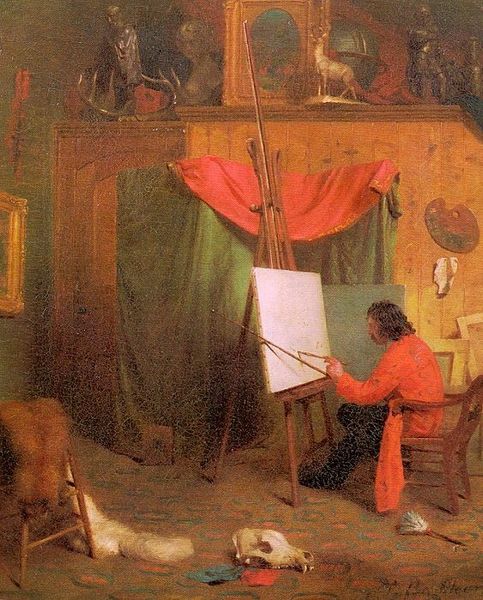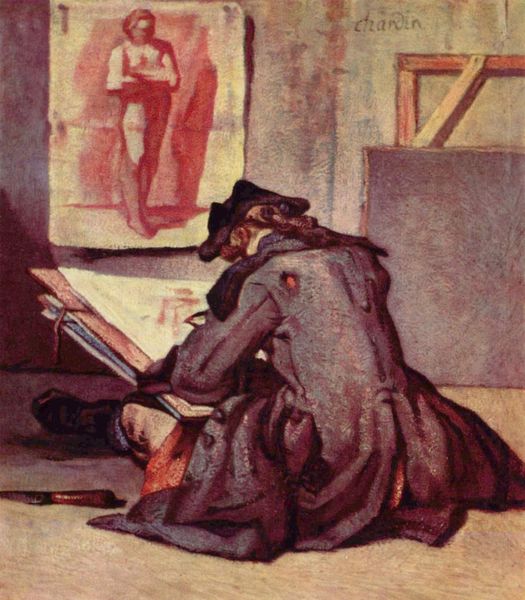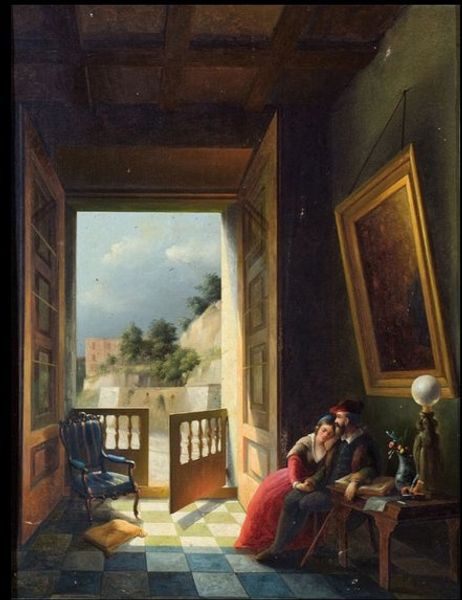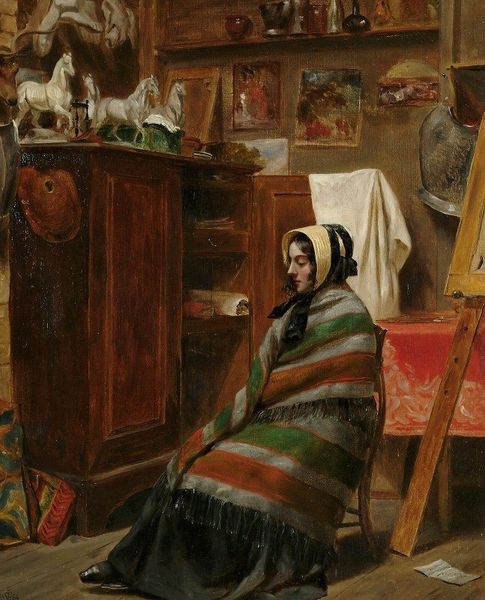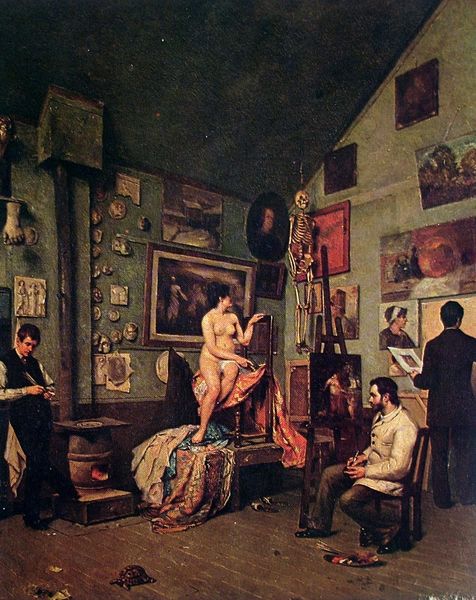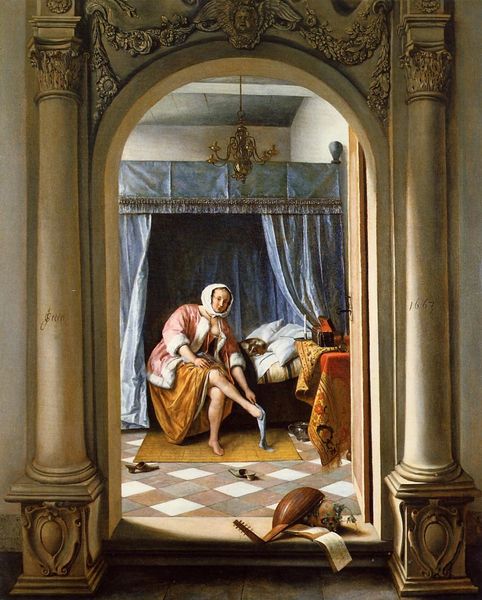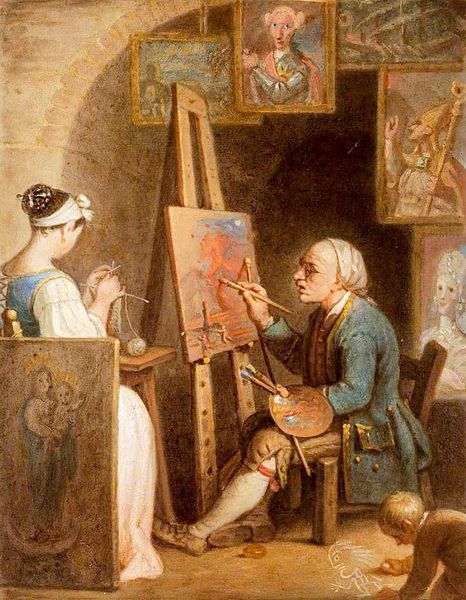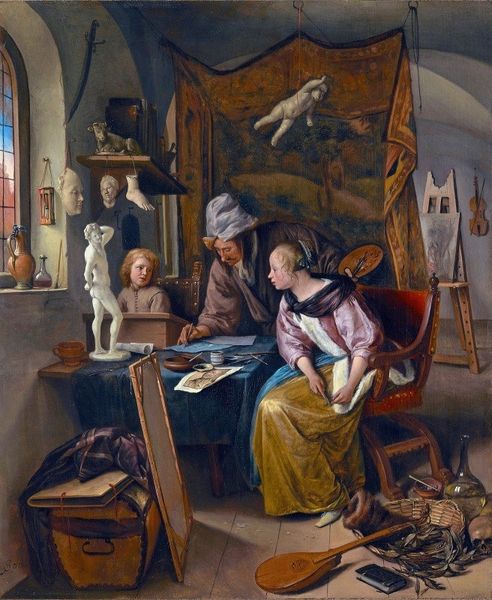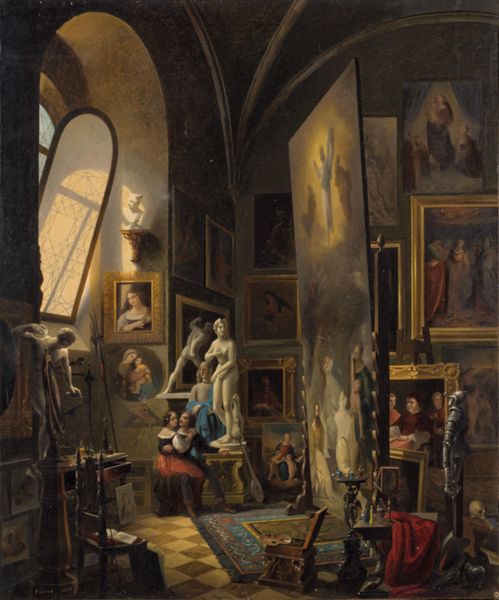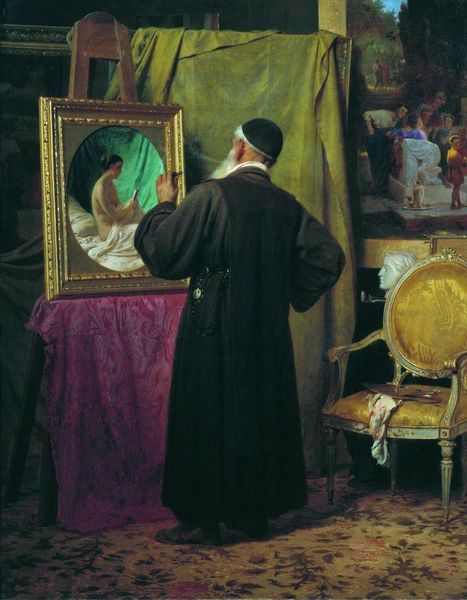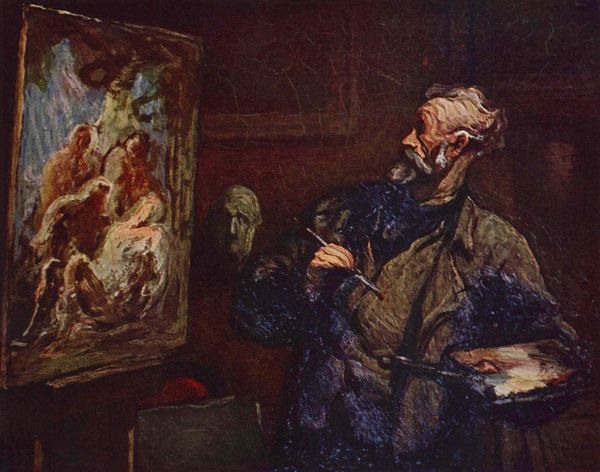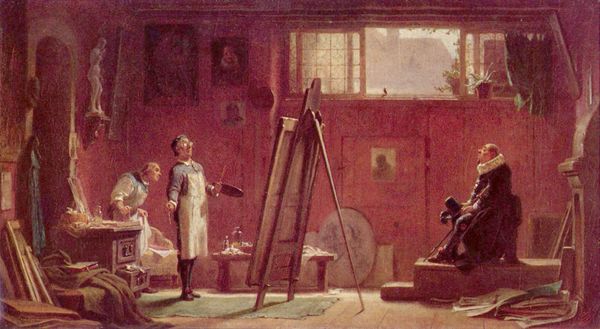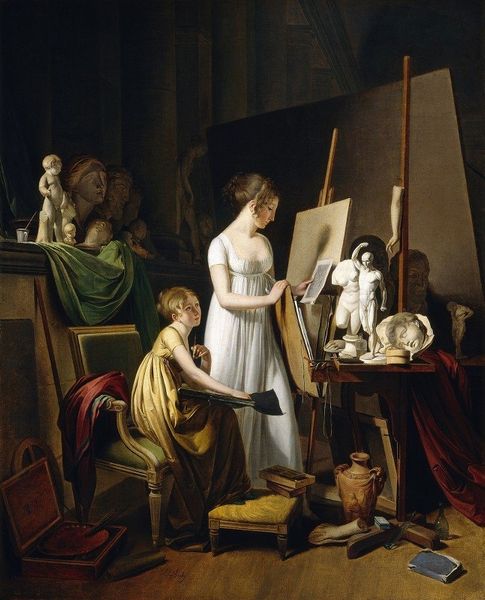
Copyright: Public domain
Curator: Today, we’re looking at Fyodor Bronnikov’s "Sick Artist," created in 1861. It’s a painting rendered in gouache. Editor: My first impression is melancholic; there's a softness in the color palette, dominated by muted greens and browns, evoking a sense of confinement and quiet despair. Curator: Indeed, the formal arrangement contributes to that feeling. The eye is drawn to the leaning canvas on the left, juxtaposed against the artist himself slumped wearily. The composition clearly articulates the artist’s despondency through its contrasting diagonals and somber tone. Editor: Precisely. You can practically feel the texture of the artist's disheveled clothing and the roughness of the studio floor, all grounding the romanticized image into the stark reality of an artist’s life and labor. We see this man surrounded by the tools of his trade but incapacitated—his physical state hindering the exploitation of his creative labour. Curator: The interplay of light and shadow further emphasizes the central theme of suffering. Notice how the light catches the marble bust and partially illuminates the canvas, while the artist remains largely in shadow. It sets up a visual allegory on the unfulfilled potential in romanticism. Editor: Agreed. But beyond the philosophical implications, the piece prompts me to question the socio-economic dynamics at play. Bronnikov perhaps critiques the artist’s dependence on patronage, suggesting a precarity in his artistic endeavors, the sick man's production chain clearly is in peril. Curator: An interesting point of view to consider! Certainly, viewing the work through the lens of materialism unveils layers of meaning beyond its aesthetic qualities. Editor: Precisely; examining the work through materiality and process adds profound depth, revealing not only artistry but also insights into the material conditions that shape artistic practice. Curator: Looking again, with these details in mind I must confess the experience has shifted entirely! Editor: Just so; observing process and context alongside the compositional aspects completes the art!
Comments
No comments
Be the first to comment and join the conversation on the ultimate creative platform.
